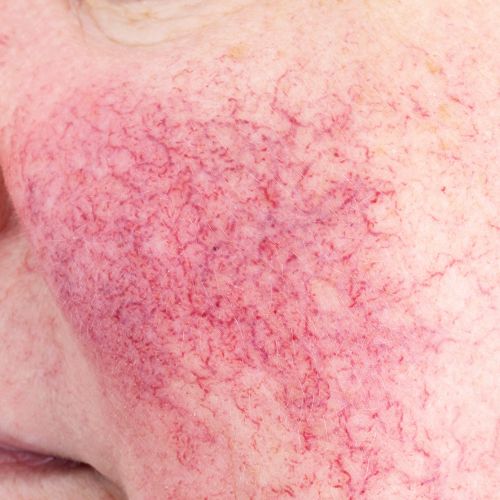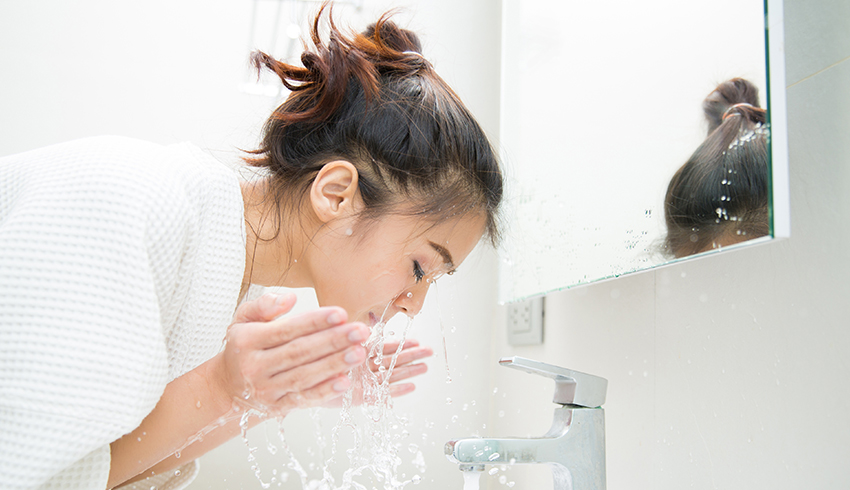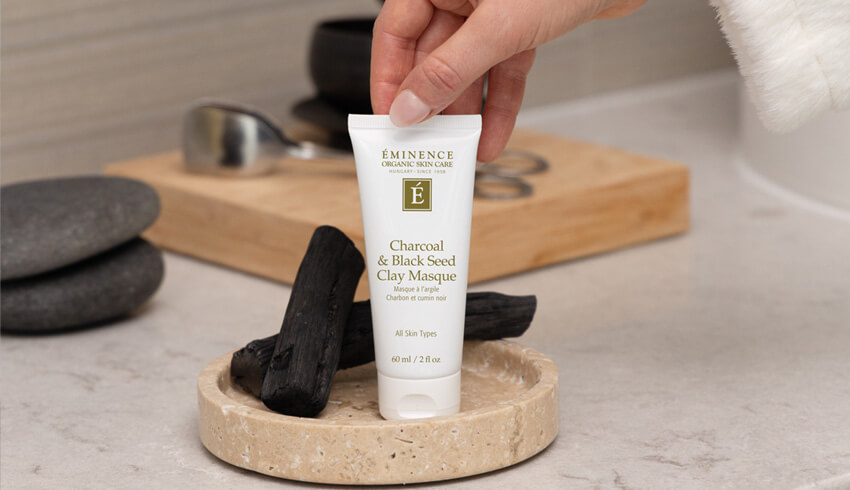
Whether due to a change in environment, stress or an allergic reaction, skin redness can pop up when you least expect it. If you’ve ever woken up with a blotchy complexion, you’ve probably experience confusion and frustrated, wondering how to relieve the uncomfortable symptoms. Learn what may be causing you to see red and how you can go about improving the look of skin redness.
What Causes Skin Redness?
If skin redness appears suddenly, continues to spread, will not fade and/or is extremely painful, the most important thing to do is seek out medical advice. It is possible that this could be a sign of a more serious condition, infection or allergic reaction, and it is crucial to rule out these possibilities before treating the skin.
If medical conditions are excluded, book a consultation with an esthetician to develop the best treatment plan. Redness is caused by inflammation and is often connected to common issues like sensitivity, exposure to outdoor elements and/or rosacea. Because these causes can present in the skin in similar ways, seeking a professional opinion is crucial in developing a plan that will effectively target your specific cause of redness.

Sensitive Skin
Sensitive skin is a common skin type that is different from sensitized skin (a temporary condition). Sensitive skin types react to stimuli that typically don’t bother other skin types such as fragrance, physical exfoliation, certain acids or heat. These stimuli can trigger inflammation and irritation in sensitive skin, leading to a blotchy complexion, rashes or bumps.

Outdoor Environment
If your skin turns red while you’re enjoying the outdoors, you’re likely to lay the blame on sunburn. However, the sun isn’t the only element that can cause your skin to turn red. Exposure to other environmental factors like cold temperatures, strong winds, heavy rain, pollution and allergens (like pollen or grass) can also leave your skin feeling red, itchy and raw. If you have a sensitive or dry skin type in the first place, this exposure will leave the skin even more inflamed and out of balance.

Rosacea
Probably the most common skin condition associated with redness is rosacea. The Eminence Organics Product Support Team says: “Rosacea is a common inflammatory skin disorder that mainly affects skin on the face, causing redness around the nose, chin, forehead and cheeks primarily.” Rosacea is a chronic skin condition with four main forms: erythemato-telangiectatic, papulo-pustular, phymatous and ocular rosacea. Erythemato-telangiectatic rosacea can also include uncomfortable swelling and roughness. Papulo-pustular rosacea can be mistaken for acne as pustules on the cheeks are a common symptom. Phymatous rosacea is common on the nose and causes the skin to thicken. Ocular rosacea affects both the skin and eyes causing the eyes to be consistently uncomfortable.
What Should I Avoid?
To improve the look of redness, dermatologists advise against using products with strong detergents or fragrances that strip the skin’s moisture barrier. Avoiding harmful irritants like added parabens, petrolatum, mineral oils, propylene glycol and sodium lauryl sulfate are a good first step in getting rid of redness. Our Product Support Team also shares that anyone dealing with skin redness should avoid:
- Salicylic acid in high amounts
- Prescription retinol
- Hydroquinone
- Alcohols
- Washing the face with hot water
- Hot showers/baths
In addition to skin care, lifestyle choices and prioritizing wellness can also help treat skin redness. What triggers your redness? Is it certain foods, alcohol, weather or lack of sleep? Keep note of these through a journal or app to take control of your skin condition.
Ingredients That Help Red Skin
While many ingredients are touted as “curing” red skin, it is important to stay informed. Nothing truly “cures” redness, but there are calming ingredients to look which include:
- Azelaic acid
- Lavender
- Chamomile
- Flax/Linden seed extract
- Clary sage
- Arnica
- Aloe
- Rosehip
- Calendula oil
- Echinacea
Having the assistance of a professional is important when treating redness. While the aforementioned ingredients are fantastic options, your skin is unique to you. Having a licensed esthetician diagnose your needs and sensitivities will ensure you do not aggravate your symptoms further, worsening your flare-ups. 
Calming Organic Skin Care Routine
If your redness is due to dryness, our Calm Skin Chamomile Collection is a fantastic option. Gentle and suitable for sensitive skin types, this collection contains ingredients like azelaic acid, chamomile and aloe vera. The Calm Skin Starter Set includes a one month's supply of products to cleanse, treat, moisturize and revitalize your skin and can be found at your favorite Eminence Organics authorized spa.
Cleanse: Begin by removing impurities with the Calm Skin Chamomile Cleanser. This creamy cleanser will leave skin feeling soft and supple. Ruby Rose is a fan, telling Grazie Magazine and Byrdie that it is one of her organic skin care essentials.
- Tone: Complete your cleansing with a gentle spritz of our Hawthorn Tonique. This mist will leave the skin looking revitalized and reduce any feelings of discomfort.
- Exfoliate: Skip abrasive facial scrubs and renew skin gently with the lactic and mandelic acids in our award-winning Calm Skin Chamomile Exfoliating Peel. While this product can be used up to three times per week, try just once a week to start and slowly build up over time (or as directed by your esthetician).
- Mask: Soothe dry skin with our Calm Skin Arnica Masque. This gentle treatment blends calendula oil, ivy, shea butter and arnica to soothe and moisturize dry skin. Use once or twice a week or as directed by your esthetician.
- Serum: Hydrate and revitalize your skin with Eminence Organics Calm Skin Arnica Booster-Serum. Dita Von Teese is a fan of this arnica, chamomile and lavender-infused serum, saying it is “amazing.”
- Moisturize: Finish your routine with our rich and creamy Calm Skin Chamomile Moisturizer. The ingredients in this gentle moisturizer leave the skin feeling beautifully soft and hydrated.
- Pro Tip: Nourish: For times when the skin is excessively dry or raw feeling, reach for our Facial Recovery Oil. It can offer relief for redness from dry skin and, like all Eminence Organics products, contains clean, organic ingredients.
- Pro Tip: In the morning, do not forget an SPF, such as all-mineral formulation to protect from drying environmental stressors as well as the sun's harsh rays.
No matter the cause of your skin redness, don't fret! With the help of your esthetician, there is a way to manage and treat chronic redness with a smoother, more even complexion in your future. Do you have any tips for managing redness? Let us know in the comments below or join the conversation on social media.


